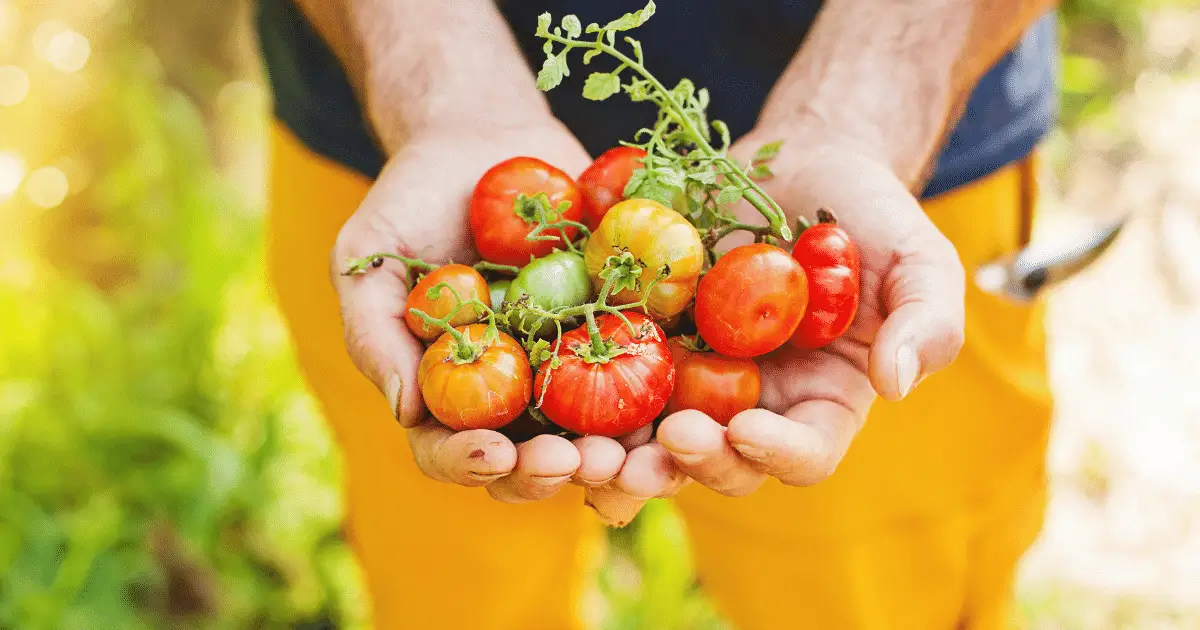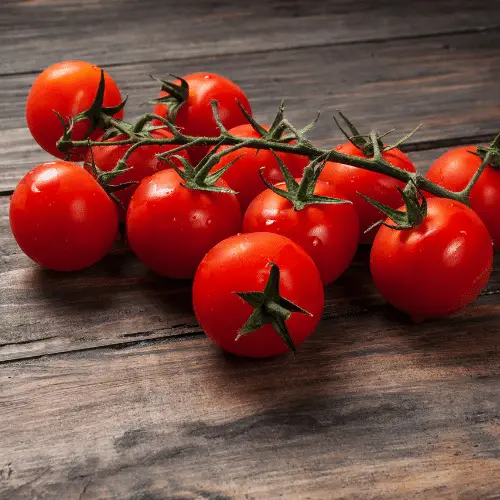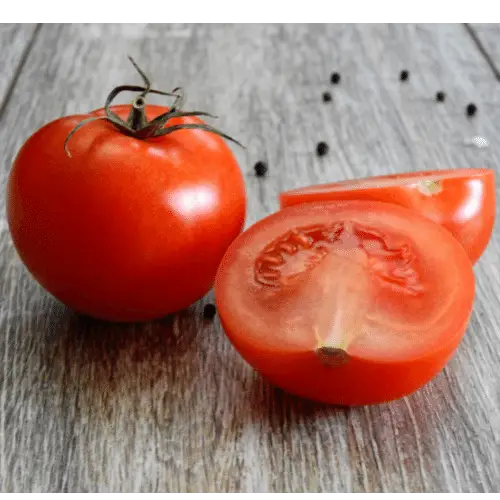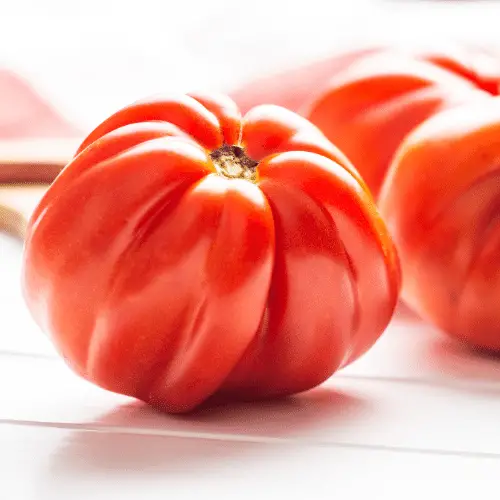
How To Grow Tomatoes
How Long Does It Take For Tomatoes To Grow From Seeds
So, how long does it take for tomatoes to grow from seeds:
For germination: 5-15 days
Seedlings for transplant: 30-50 days
Transplant to harvest: 50-120 days
This question is an important one as it gives you an idea of when you need to get your seeds planted. Unfortunately there is no definitive answer but general time frames, based on exactly what you’re asking, what variety of tomato you are growing, where in the world you are and your particular growing methods.
So are you really asking how long do tomatoes take to grow from seeds to fruit bearing, fully grown plants? Or do you want to know how long does it take for tomatoes to grow from seeds to sprouted plants that you’re able to transplant outside – in other words, how long does it take for tomato seeds to germinate.
How To Grow Tomatoes
The tomato is definitely one of the most popular of all home grown vegetables (well technically it’s a fruit…) and for good reason. They are vibrant, delicious, easy to grow and because of how prolific their fruits can be they are very rewarding to grow. They can be grown in garden beds, grow bags, potted vegetable gardens or even hanging baskets.
Tomato Varieties
So you’ve decided that you’re going to grow yourself some tomatoes and now it’s time to decide which type you want, after all there’s no point in growing dozens of tiny cherry tomatoes if you plan on making big pans of pasta sauce with them. We’re not going to look at specific varieties here but rather the four general types;
Cherry Or Grape Tomatoes
As the name suggests these are small tomatoes, generally about the size of cherries or grapes at the largest. The fruit grow in bunches and are usually very sweet and full of flavour.
They are the easiest type to grow as they are generally prolific fruiters, are more resistant to disease and drought and are just quite a hardy plant.
These are great for growing in containers or pots and if you get one of the tumbling varieties then they can be grown very successfully in hanging baskets.


Salad Or All Round Tomatoes
These are your ‘run of the mill’ tomatoes about 2-3 inches across, not as sweet as cherry tomatoes and a little more watery.
This type of tomato has more varieties than the other types and is great for slicing for sandwiches or on top of your burger.
These need more space than cherry tomatoes so can’t be grown in small containers but can still be grown in larger pots and grow bags etc.
Sauce Or Roma Tomatoes
These amazing tomatoes are big plum tomatoes with sweet, firm flesh and not much juice which makes them ideal for cooking down into sauces.
Some of these tomatoes are pretty big and the plants need a good bit of space.


Beefsteak Tomatoes
These are huge, heavy tomatoes with some of the varieties producing fruit of over 6 inches across.
These are a favourite for slicing and putting in sandwiches.
These plants need plenty of space and have the longest growing time of the types so need a long and hot summer to produce really well.
Planting Tomatoes (Tomato Growing Guide)
Tomatoes belong to the Solanum group in the vegetable garden and can be planted with others such as Capsicum, Chilli and Eggplant as well as potatoes, but I wouldn’t plant in with potatoes. (I grow potatoes in container vegetable gardens)
Tomatoes are warm season plants, originating from tropical climates and one of the most common mistakes people make is planting them out too early. Plants are usually made available in commercial nurseries LONG before it is warm enough to grow them outside and many people struggle, often losing plants in the cold so don’t plant out seeds, seedlings or advanced plants until the last frosts have passed AND temperatures remain above 15 deg C (lower temperatures can be counteracted by the use of micro-climates created by things such as nearby brick walls radiating warmth)
Tomatoes prefer slightly acidic soils that are well prepared with rotted manures and compost and fed with chicken manure and potash.
The only real difference when it comes to variety is personal choice, i.e – the type you like, when you want them to fruit and how much room you have.
So are you going to grow your tomatoes from seeds or are you going to buy plugs or potted plants?
Buying Tomato Plugs Or Plants
The easiest way to grow tomatoes is to buy commercially grown plants from a garden center or online. You would generally buy them as either a potted plant or as plugs which then need planting into 3.5inch / 9cm pot in a multi purpose compost.
Allow the plants to establish indoors or in a greenhouse and then transplant out in exactly the same manner as when growing from seed.
There are a number of benefits from this method with it being a quick and reliable way to get advanced plants and you don’t need any propagators, seed trays or specialist seed soils.
Another benefit is that you can buy plugs that have been grafted on to disease resistant and vigorous rootstock meaning you should get a more hardy and disease resistant plant.
Growing tomatoes from seed is easy and quite rewarding, although it doesn’t give the instant results that planting an advanced, nursery bought plant does. The trick is to start early, but you must do this (in colder climates) in either a green house or indoors. Basically a warm sunny position, if you have access to a heat pad, even better. We have an article HERE looking at how to choose a greenhouse if you’re going down that route.
Start your seed raising in late winter to get a good head start, if you have enough space, select a few varieties and try to get some that fruit early and some that fruit late to extend your harvest season.
SOW your seeds about four weeks before the last expected frost. Fill some seed trays or small pots with a good quality potting soil or compost but don’t worry if you can’t get this as multi purpose compost or even some soil from the garden will work.
Make a small indentation in the top of the soil, about 1cm deep and place a couple of seeds inside before loosely covering with some more soil. You now need to keep them somewhere warm and sunny such as a window sill or even better, a propagator and keep the soil moist.
After anywhere from 3 – 15 days you should start to see little shoots sprouting out of the soil.
TRANSPLANT your seedlings once two true leaves have formed. Do this by filling a 3.5inch / 9cm pot with some multi purpose compost and gently prick out your seedling and plant it into the new pot but plant it up to just below it’s first leaves. This ensures a deeper and stronger root.
Now return you plants to their warm spot on the window sill or in the greenhouse.
PLANT OUT your plants when they are 5-10 inches tall AND the last frosts have passed by at least a couple of weeks. This is when you now want to plant them in their final growing spot such as their grow bags or planters etc. You want this to be a warm sunny spot.
Ensure to plant them about 50cm / 20inches apart from each other.
STAKE your plants unless they’re a tumbling variety that you’re growing in hanging baskets. This is to ensure the stems don’t bend under the weight of any fruit and allow it to trail along the ground as this can result in the fruit rotting as well as exposing them to more hungry critters.
WATER your plants frequently enough when required to try and keep the soil evenly moist.
FEED your tomato plants with a good quality tomato feed every 10-14 days. Or you can make your own homemade organic liquid fertilizer.
HARVEST your tomatoes when they are fully ripened on the vine and enjoy what your hard (maybe not so hard) work has provided you with.
If you have any tomatoes which you remove from the vine before they’re ripe then just store them next to a banana and this will aid their ripening.
What To Do With Tomato Plants In Winter
So, are tomato plants winter proof? Well the answer is that unless you live somewhere warm year-round then your tomato plants are not going to last through winter even though they are naturally perennials.
What you can do however is take some cuttings from your healthiest plants and with a little bit of work you can grow them indoors over winter. This means that by the time the last frosts have passed, you have an amazingly healthy and advanced tomato plant ready to be planted out.
Not everybody is a fan of this technique but it’s one that I have used time and again with fantastic results so have a read of What To Do With Tomato Plants In Winter and help yourself on the way to a bumper crop for next season.
Tomato Pests And Disease
Blossom End Rot In Tomatoes
If you have Blossom End Rot then you will get black spots on the bottom of the tomatoes where the flower remnants are or where. These will be about 5 – 15mm across and will begin to spread as the fruit develops.
If this only sets in late in the season and your fruit are already developed so only slightly affected then you can simply cut off the affected portion and eat the fruit but if it sets in earlier then the affected fruit will just rot on the vine before ripening.
You will often see this blamed on a lack of calcium in the soil and the resulting advice is to add more calcium to your soil mix to prevent it. This is generally not actually the case as most soils have a perfectly adequate calcium content but the problem comes when the plant is unable to extract that calcium from the soil due to various environmental factors.
Blossom End Rot is not really ‘treatable’ as such and if you get infected fruit there is nothing you can do for it but don’t stress too much as you will usually find only a small percentage of your fruit suffers from it. Just pick off the affected fruit and either eat (having removed any rot) or discard.
There are some steps you can take to try and prevent the issue;
1. Plant out in well drained soil.
2. Don’t over fertilize.
3. Ensure they get enough water routinely.
Additionally, I plant all seeds in egg shells which are then crushed and added to the soil as I plant them on. This ensures a little bit extra in the way of minerals and calcium – just in case your soil does need a little more.
Caring For Tomatoes
How can I ensure successful crops? If you search through the internet then you’re going to find a whole raft of information, most of which is going to say ‘you must do this’ and give very clear instructions on what you ‘have’ to do.
Some of this will be time consuming, complicated or expensive to do successfully. Don’t let this stress you out or put you off trying to grow tomatoes as the reality is that it really is quite easy to successfully grow them.
The information I provide is based on many years of success and what I have found works for me but the fact is that the success of a method can vary based upon so many little factors so if you can’t do exactly as I do then don’t worry as the odds are you will still grow tomatoes that are far tastier that what you can buy. Have a try of what interests you whether that’s grafted, growing from seed or buying seedlings, pinching off side shoots or leaving it natural – in fact why not give it all a try and see what works for you.
What do I do? I stake all plants that aren’t in hanging baskets and I just let them do their own thing without worrying about pricking off shoots and I just feed with a good general tomato fertilizer when potting and use Homemade Organic Liquid Fertilizer throughout the growing process. I do also overwinter my plants to give me a head–start.



